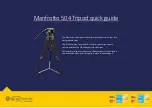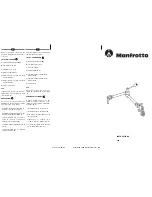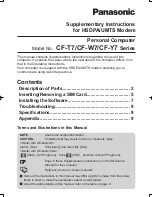
w w w . m a g u r a . c o m
s e r v i c e @ m a g u r a . d e
w w w . m a g u r a . c o m
s e r v i c e @ m a g u r a . d e
16
17
3.
Prepare the transparent filler tube by pushing in by hand the M6 barbed fitting.
Put the other end of the filler tube on the syringe and fill the syringe
completely
with
MAGURA Blood mineral oil. Fill the syringe completely and make sure that
there are no
air bubbles inside.
Turn the syringe eventually to push out air bubbles.
4.
Remove the brake pads as described on page 12 and slide the YELLOW trans-
port device as shown
with its THICK END
between the caliper pistons. Squeeze slightly
the lever blade (pump) to tighten the transport device.
Only use the YELLOW trans-
port device for this procedure, the formerly used black one is not suitable for
this work!
5.
Fix the caliper so that the connecting bolts of the caliper (arrow) are positioned hori-
zontally. It might be necessary that you have to unscrew the lower caliper fitting bolt and
to fix the caliper as shown. Unscrew bleeding screw with a 3mm Allen key. Screw in the
prepared syringe and tighten it by hand.
Place now a rag, which has to be free of oil or lubricants around the reser-
voir and, more important, around the brake caliper. Care for a clean working
environment. No dirt or particles may come into the brake system!
6.
Unscrew the Torx T7 reservoir cover screw and remove the cover with the membrane
sitting below. Begin to
slowly
press the oil contents of the filling syringe through the
system until no further air bubbles can be seen
7.
Press the MAGURA Blood oil through the system. Use a second syringe to suck
any overflowing oil. at the reservoir. Then pull the filler syringe to suck oil back. Repeat
procedure 3-4 times and actuate CAREFULLY the lever blade simultaneously.
Make
sure that there is always enough oil in the reservoir when you suck the oil with
the filling syringe.
8.
Use the second syringe to suck any overflowing oil. The rag around the brake
lever and the caliper prevents overflowing oil from dropping down and contaminating
and killing the brake pads. Push
the complete contents
of the filling syringe through
the system.
9.
The reservoir has to be full to the top before replacing the membrane and the
cover.
The XC disc brake wheel
There already exists enough literature concerning wheels, so just a few tips how a
well-built X-country disc brake wheel has to be.
Use spokes with a diameter of 2mm (arc)/1,8mm which you cross three times.
No radial lacing with disc brake wheels!
Head-inside-spokes (=arc-outside-spokes have to be pulled, i.e. these spokes point for-
ward on the front wheel; on the back wheel these spokes point forward on the rotor side
and backwards on the drive side. All spokes have to be stressed equally and high.
Never use ultra lightweight quick releases with titanium or aluminum axles
for your wheel sets in combination with a disc brake. You will not be in a positi-
on to realize the necessary tightening torque!
10. The disc brake wheel
10.
Replace the cover with the membrane onto the reservoir. Oil will spill during this
procedure therefore do not forget to place a rag around the brake lever. Tighten the
cover screw until the cover is flush with the reservoir.
Use only the original Torx T7
bolt. Any other screw will lead to leaks, damages and failure of the whole
system! Tightening torque 0,6Nm/5 in.lbs
11.
Remove the syringe and screw in the 3mm allen bleeding screw.
Tightening torque: 2,5Nm/22 in.lbs.
Re-position the brake caliper
(tightening tor-
que 6Nm/51 in. lbs.).
Re-install the brake pads and the wheel.
Always pull the lever blade several times (pump) until the brake pads touch
the rotor.
Always check for correct installation by activating the lever blade and
checking for eventual leaks.
Never contaminate brake pads with oil or grease this causing permanent
loss of brake power! Contaminated pads are definitely dead and must be repla-
ced! A contaminated rotor can be cleaned with warm dishwater or alcohol.




























